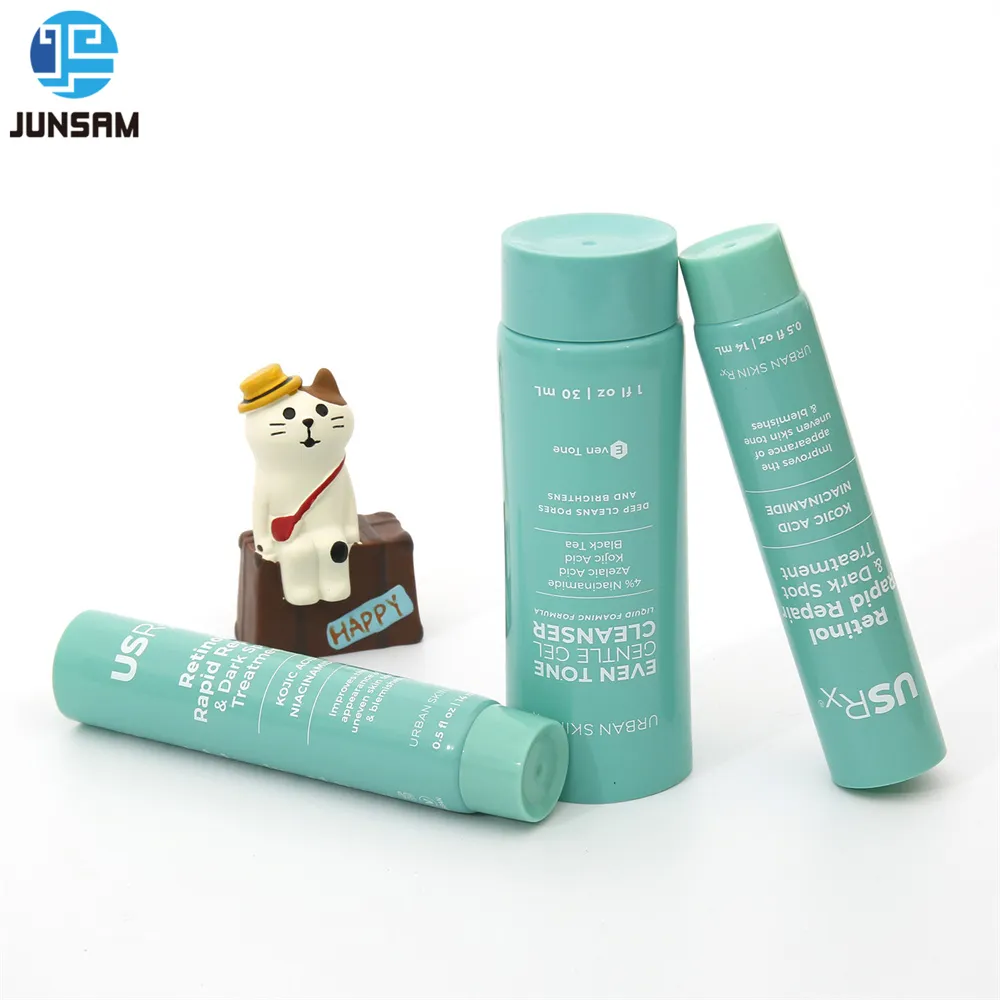Cosmetics, an industry ornate with diverse products, requires reliable, functional, and aesthetically pleasing cosmetic tube packaging. One packaging solution that meets these nuances and stands out from the rest is collapsible tubes. This article explores the world of collapsible tubes, including aluminum collapsible tubes, laminated tubes, and plastic tube variants, contextualizing their features, advantages, eco-credentials, and industry trends.
An Overview of Cosmetic Tube Packaging: The Trio of aluminum collapsible tubes, laminated tubes, and plastic tubes
Delving into cosmetics packaging, cosmetic tube packaging encompasses a significant place. This category branches into three key types: aluminum collapsible tubes, laminated tubes, and plastic tubes. Often seen housing products from creamy lotions to pigmented lipgloss, they cater to the industry’s amplitude and its audience’s varied preferences, underlining the versatility of these remarkable packaging options.
The Standout Features of Cosmetic Tube Packaging
Cosmetic tube packaging presents an ensemble of features adaptable to the textured landscapes of cosmetics. Aluminum collapsible tubes boast exceptional inner lacquer properties, safeguarding products from chemical and metal reactions. Particularly for hair color tubes, the correct type of inner coating ensures effective safeguarding of the hair dye cream, preventing any reactions between the hair colorant cream and the tube wall.
Laminated tubes, on the other hand, couple the strength of aluminum with the benefits of plastic, making them lighter yet resilient. Their multi-layer structure bolsters product preservation while offering a smooth surface for brand storytelling.
Lastly, plastic tubes are beloved for their flexibility and cost-effectiveness. They accommodate a suite of closure styles, from flip-top caps to custom-molded applicators, personalizing the consumer experience.
Advantages of Adopting Collapsible Tubes for Cosmetics
The adoption of collapsible cosmetic tube packaging unravels a treasure trove of advantages. Cosmetics, brimming with active ingredients and unique textures, receive a haven inside these tubes, protecting them from the ravages of external conditions.
Beyond their protective roles, these tubes offer consumer-friendly utilization. Consistent product discharge, minimal waste via fully collapsible bodies, and design ergonomics account for a delightful user journey. Moreover, brand differentiation is facilitated by the tubes’ flexible decorating potential, enabling varied designs and finishes.
Collapsible Tubes’ Contribution to a Greener World
Against pressing environmental concerns, collapsible tubes are steering the cosmetics industry toward sustainable packaging solutions. Aluminum tubes are recyclable, emphasizing closed-loop recycling, while plastic and laminated tubes advance towards greener formulations. Moreover, their optimized product yield reduces surplus cosmetic waste, a big win for environmental conservation.
Collapsible Tubes: The Cosmetics Packaging Trend
Being at the crossroads of versatility, function, and eco-consciousness, collapsible tubes have emerged as a definitive trend in cosmetics packaging. Their breadth regarding materials, sizes, and applicators caters to diverse product genres and brands, from indie to luxury.
Moreover, their synergy with sustainability targets and consumer-focused designs brings them into the limelight, a trend becoming increasingly conspicuous within the industry.
Conclusion: Collapsible Cosmetic Tube Packaging, The Future of Sustainable Container
Exploring the spectrum of packaging options, collapsible tubes—aluminum, laminated, and plastic—have etched a notable presence in cosmetic packaging. Their noteworthy features and advantages dovetailed with sustainability make them an optimal choice that aligns with the contours of our green planet and the cosmetic world’s evolving dynamics. As trends predict their continued growth, collapsible tubes pave the pathway forward, shaping the future of cosmetics packaging.


